Voting with two wheels
UOW academics pedal for health and sustainability, and they want you to start doing it too
June 8, 2023
Cycling to work can help improve physical and mental health, reduce congestion and mitigate climate change.
At the University of Wollongong’s (UOW) main campus, a quiet revolution is reshaping the roads that wind through its landscapes. At the heart of this transformation are the academic cyclists who ditch their cars and don helmets to commute to work on bicycles. And even though their numbers are still small, they are optimistic that one day, cycling will become not only the most popular weekend recreational activity but also a standard mode of weekday transport.
De-stress and decompress
“I’ve been riding to and from work since I was a PhD student, so 20 years now. Cycling is great for me – it wakes me up on the way to UOW in the morning and gives me a little bit of de-stress time on the way home, as I’m not fighting the traffic so that I get back to the kids having left any work stress behind me. And, of course, I get a ‘parking spot’ right at my building and a traffic-free commute to the University every day, all semester long. It’s a bonus that I’m also not burning petrol in the process,” UOW mathematician Professor Aidan Sims confides as he’s parking his bicycle near Building 39, waving hello to a few people passing him by.
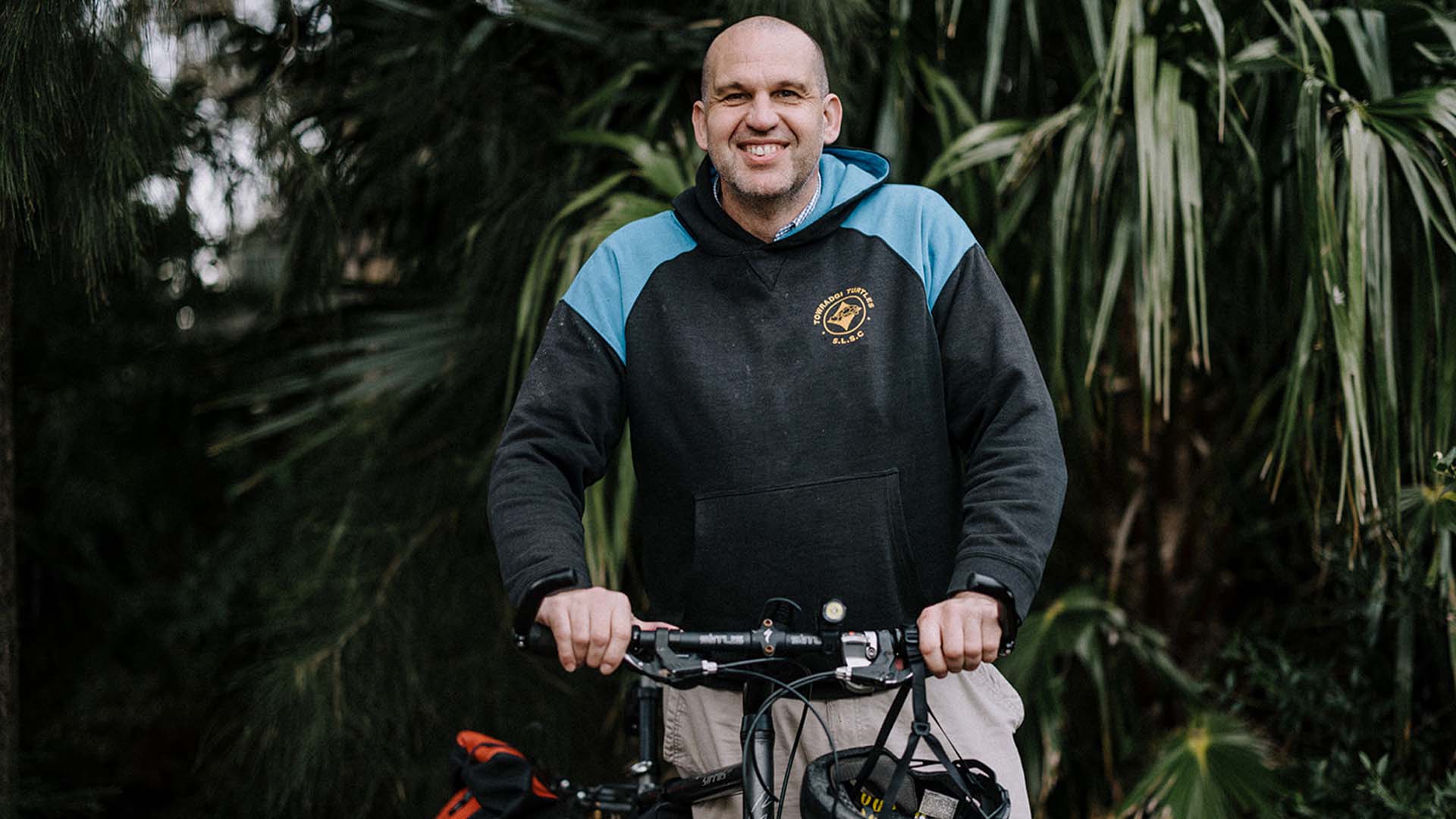
For many UOW academics who cycle to work, their daily commute becomes a platform for scientific ideas to blossom, theories to take flight and connections to form.
“There’s quite a few of us who cycle to work from various suburbs in the Illawarra. We have this invisible bond – every cyclist I meet on the pathway bridge near the entry to UOW feels like a friend,” says Dr Eline Schotsmans, archaeologist and research fellow at UOW’s School of Earth, Atmospheric and Life Sciences.
Aidan admits that his bike rides are the most productive and creative time of his day.
“When I am on the bike and having a leisurely ride home or wherever, I can let the brain whir away thinking about maths. There are a couple of papers of mine that I am particularly proud of where the way to prove the main result just sort of popped into my head as I was riding home!” Aidan adds.
Swimming against the current
For Eline, cycling is part of her cultural make-up – something so interwoven into her daily life that she cannot imagine going without it. But she admits that her European perspective – she is Belgian (Flemish) and has lived in the UK and France before moving to Wollongong – means that in Australia, she often feels like she’s swimming against the current.
“In Europe, my husband and I own three bicycles each, just like all our Belgian friends: a city bike, a road bike and a mountain bike. The bicycles we use for commuting are cheap and simple, the ones you can leave behind and not worry if something happens to them. Here, it’s a bit different. As a family with two small kids, we also have and use a car, but we’re committed to cycle commuting every day, rain, hail or shine,” Eline says.
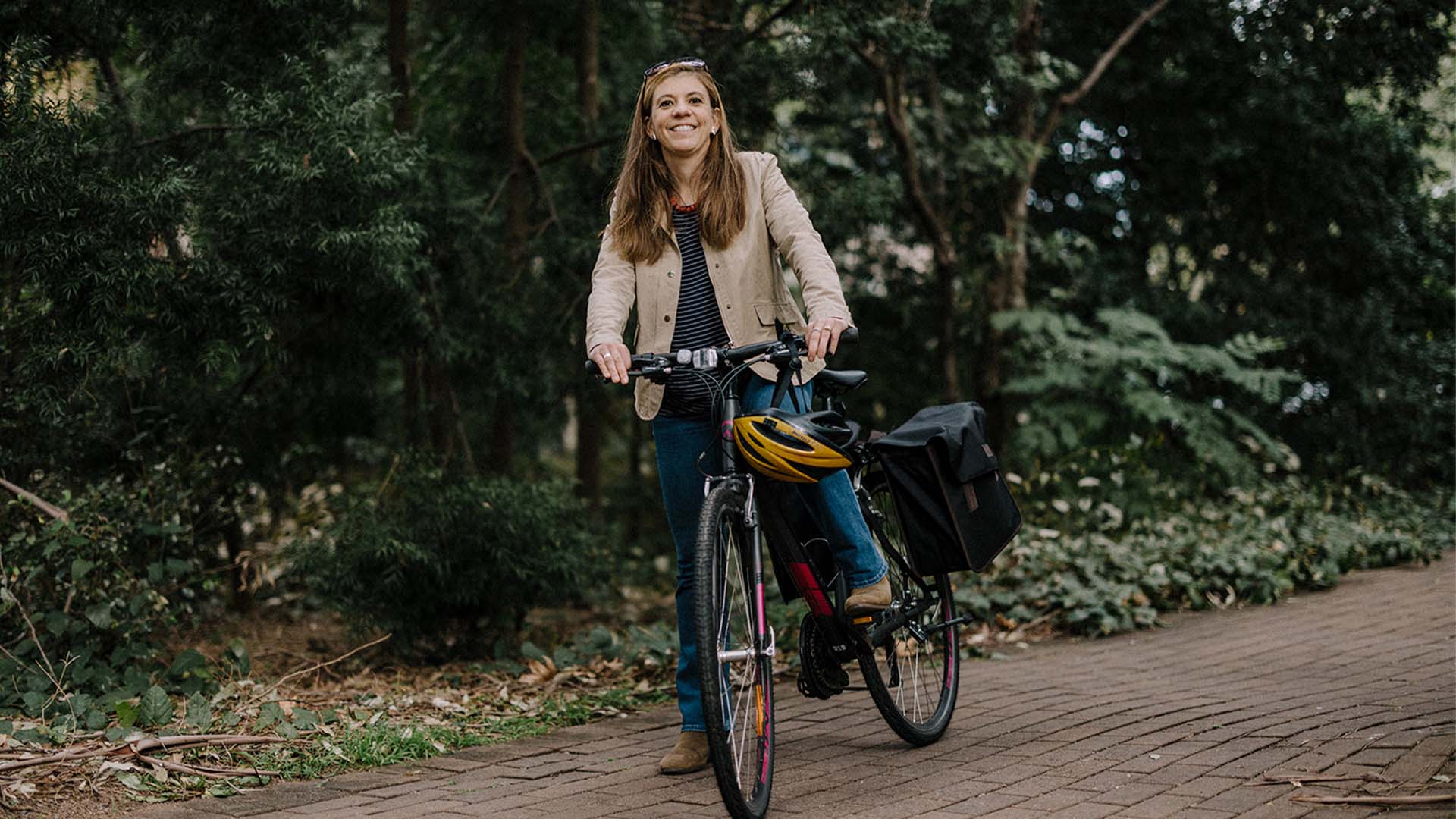
Dr Eline Schotsmans used to live in the UK and France before moving to Wollongong and she's hopeful Australia is on the way to become more bike-friendly.
Discussing the advantages of cycling to work, both Eline and Aidan highlight the incidental physical health benefits they’re getting by staying active, which – in turn – have a positive impact on their mental wellbeing. And they are not mistaken.
Research proves that regular cycling is a massive boost to one’s health and vitality, improving cardiovascular strength, boosting immunity and reducing the likelihood of strokes, obesity and high blood pressure.
In 2017, researchers from the United Kingdom found that cycling to work was associated with a 41 per cent lower risk of premature death than commuting by car or public transport. Cycle commuters had a 52 per cent lower risk of dying from heart disease and a 40 per cent lower risk of dying from cancer.
Beyond physical health, cycling also enhances mental wellbeing by lowering stress, anxiety and depression levels.
“For me, cycling translates to a boost of energy, happiness and productivity. It’s like a cup of coffee in the morning. What’s more, it’s great for busy people, who wouldn’t have enough time during the week to engage in separate sports or gym sessions,” Eline says.
She commutes to UOW daily from Corrimal, right after she drops off her children, also on bikes, to school.
Cycling as a political act
Associate Professor Nicholas Gill, Head of the School of Geography & Sustainable Communities, confides that he’s just never stopped cycling since childhood. For him, cycling is a lifestyle choice, a healthy and sustainable commute option but also – importantly – a political act.
“Our roads are congested, our parking spots are crowded, our air is polluted, and more and more people suffer from chronic diseases. And still, in Australia, it's common for families to own more than one car. I feel that each time I hop on my bike, I’m voting with two wheels against the current politics of transportation,” Nicholas says.

According to Dr George Takacs, UOW honorary senior fellow, climate change researcher and one of the most prominent advocates of cycling at the University, transport is Australia’s second-largest source of greenhouse gas emissions. By 2030, it’s predicted to overtake electricity generation as the primary source.
At the same time, switching from a car to a bicycle saves 150 g of carbon dioxide per kilometre. Each 7 km by bike will save an emission of 1 kilogram of carbon dioxide compared to the distance covered by car.
“Cycle commuting is one of the most cost-efficient and proven strategies for reducing urban carbon footprint and traffic congestion. A standard-width vehicle lane repurposed as a two-way cycle lane can transport around seven times more people per hour than if used by cars,” Dr Takacs explains.
The 2016 Census found that 9.2 million people in Australia commute to work every day, on average travelling 16.5 km to their workplace. Of these, 79 per cent get to work by car, 14 per cent take public transport and only 5.2 per cent either cycle or walk. The United Nations recommends that 20 per cent of all transport funding per annum should be allocated to non-motorised transport.
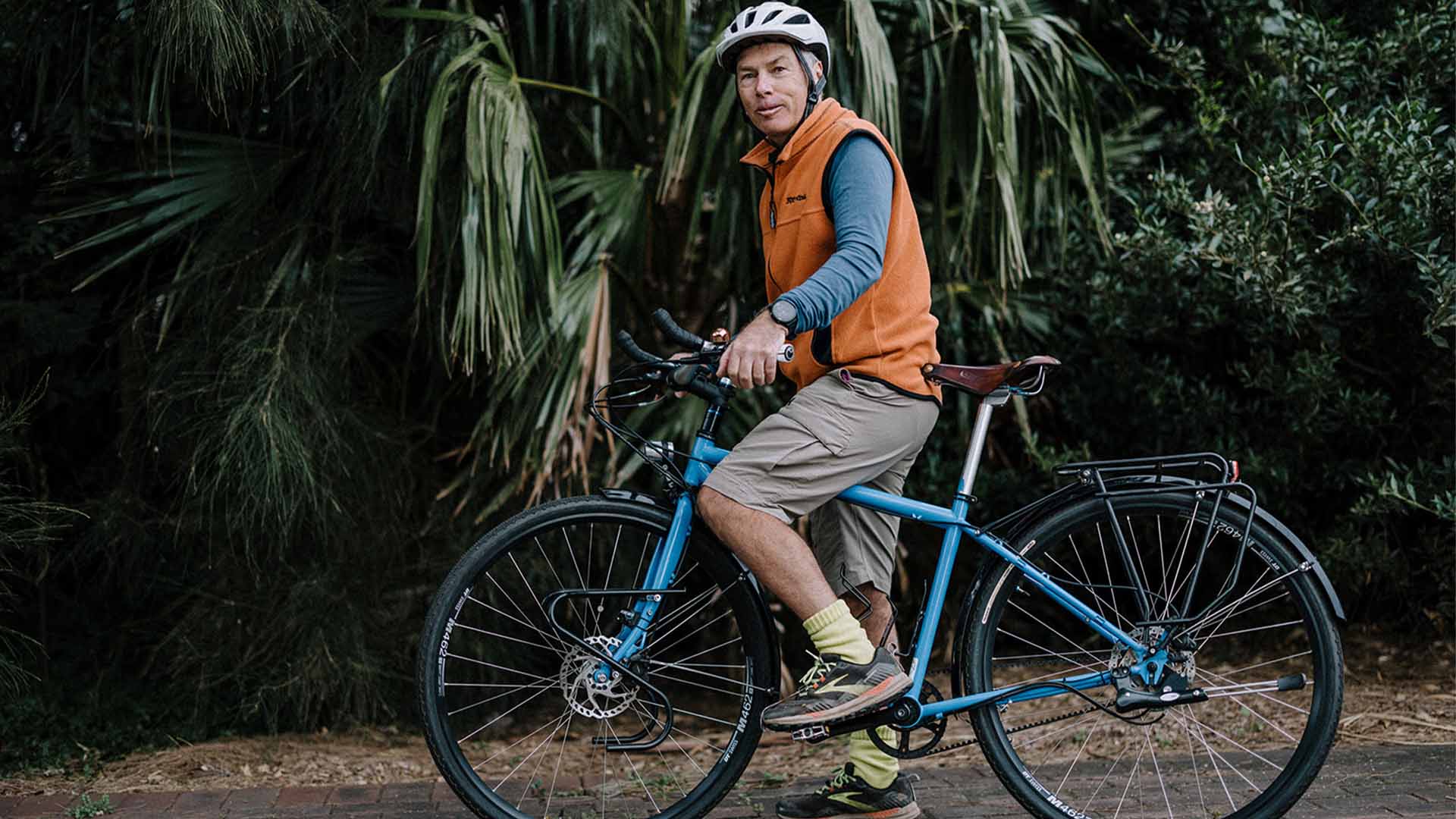
Since just over half of all commuting trips to UOW are under 5 km, most local cycling activists advocate for staff and students who live close by to replace driving to campus with cycling, taking the train or a bus, or simply walking. Yet according to a 2013 UOW travel survey, only around 3.5 per cent of people at UOW commute to work or class by bicycle.
“Cycling to work has all the sustainability and incidental exercise benefits, and I see it very much in those terms, but what keeps me doing it day in day out is that it’s just so much fun. I love it. It’s such a dynamic and immersed way to move around town,” Nicholas says.
Pay people to cycle
Many people admit that they’d like to live ‘more green’, but the demands of their daily lives – long work hours and commute time, having to transport small children to their activities – mean they’re failing in the sustainability contest. Nicholas says that as a community, we live within the modern world and are constrained by how it’s set up. That’s why the responsibility shouldn’t only be placed on individuals but also on the larger structure.
“It’s important about how we organise our cities, campuses, and how much we incentivise using alternative transport.
“I always rode, and I taught my kids to ride, but it’s harder juggling younger kids and transport when you work and where everybody is spread out. Since my children are older, I’m able to make more sustainable choices. We now live in an apartment, have one car, and have given our other car space to bike storage. But there’s more to do. I’d love to be able to salary-sacrifice my bicycle as much as people do with their cars,” Nicholas says.
Before moving to Australia, Eline Schotsmans lived with her family in the French city of Bordeaux, which – with a population of about 250,000 citizens – has a similar size to Wollongong. It was not a bicycle-friendly city when they arrived. Cycling was dangerous as cars were parked on the footpath or on the bike paths, which were generally scarce, and car drivers behaved aggressively towards cyclists. But as Eline says, everything changed with Bordeaux’s new city planning. The city council started investing in cycling: introducing new bike-only streets, cycle tracks, permanent bike lanes, secure bike parking and public-use bicycles. Cars were almost totally banned from the city centre and replaced by other sustainable transport options. In a few years, the city changed from a car-friendly city to a bicycle-friendly city.
“That was a brilliant initiative. Another one is that in Belgium, we’re paid by our employers to commute to work by bike. The bicycle allowance is about half a dollar per kilometre. I now ride around 8 km twice a day, which means I’d be able to save around $40 a week if we had a similar incentive here,” Eline says.
Towards a greener future
But there’s a light of change on the horizon. The 2021 National Walking and Cycling Participation Survey(NWCPS) found that the COVID-19 pandemic increased cycling participation, boosting bike trips by 45 per cent and showcasing a sharp shift in attitudes towards urban mobility and environmental consciousness.
Just last month, the joint efforts of Healthy Cities Illawarra, Wollongong City Council, UOW, Illawarra Shoalhaven Local Health District and Transport for NSW saw almost 100 people ride to the University in a community event called Ride2UOW. The ride was founded by a UCI grant and tied with the launch of the Bike Friendly Employer Program, an accreditation system by Destination Wollongong, of which UOW and Council have become the first members.
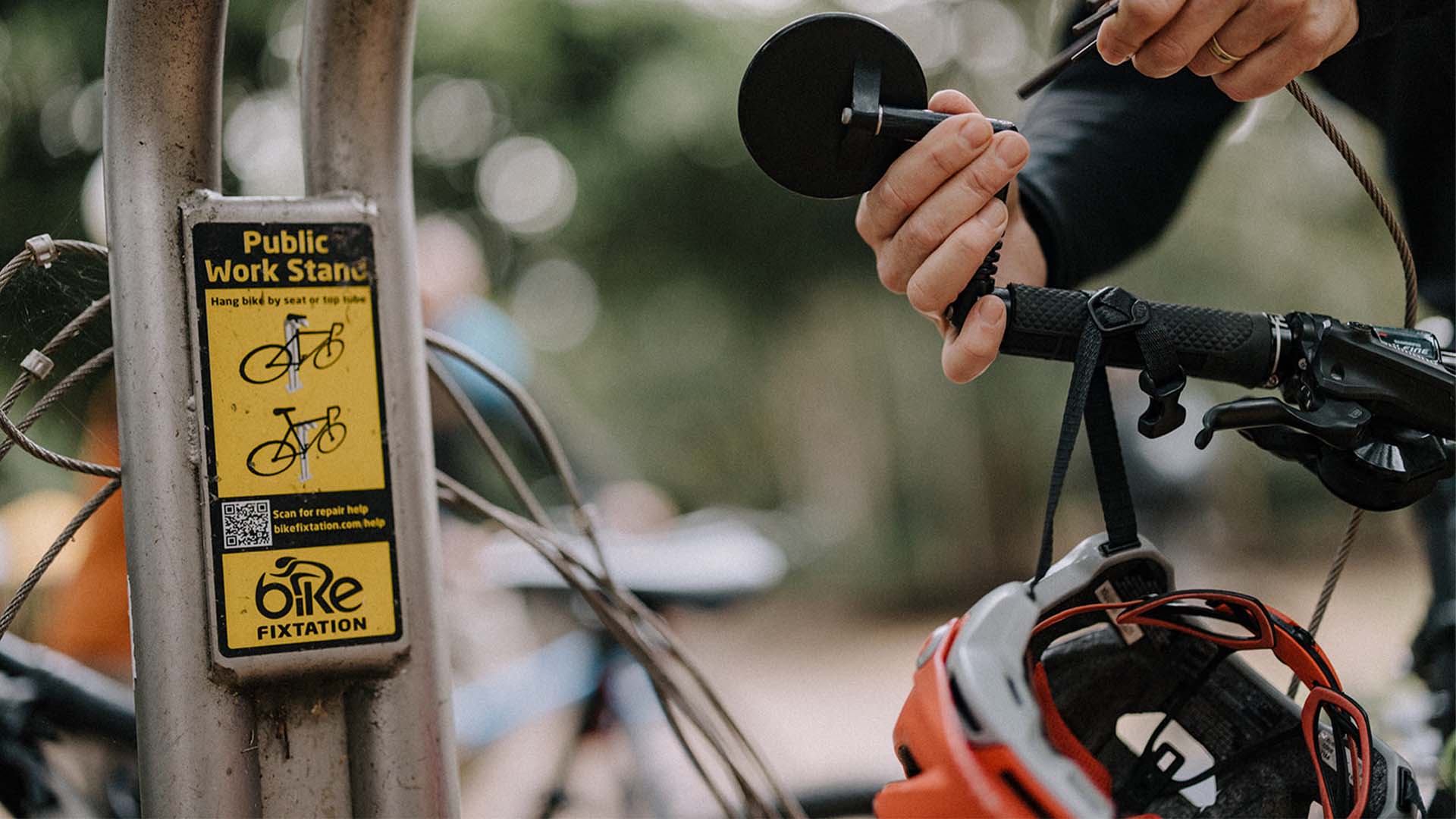
UOW’s connection to cycling and other sustainable modes of transport is quite naturally tied to its young community of students – in many countries, Generation Z is doing the most to lead a sustainable commuting movement. And the University is well prepared to cater to their needs. There are two bike maintenance stations on the Wollongong campus (on Jugglers Lawn and near Building 20S), seven bike bases that allow for bikes to be locked and protected from the weather, and 52 regular bike racks – alongside a range of cycling-related research, workshops and staff and student-led cycling initiatives happening regularly across UOW’s campuses.
UOW Cycling Club was started in 2021 by enthusiastic cyclists and UOW PhD students Juliana Peloche and Carolina Badillo, and has since grown to over 150 members. Last year, right after the Wollongong 2022 UCI Road World Championships, they managed to secure a second operational grant from UCI, which allowed them to start a bike loan system for all UOW students. So far, they have refurbished and donated 70 bikes equipped with locks and helmets. The Club has also partnered with Ride Nation to deliver educational workshops to every participant in the bike loan program.
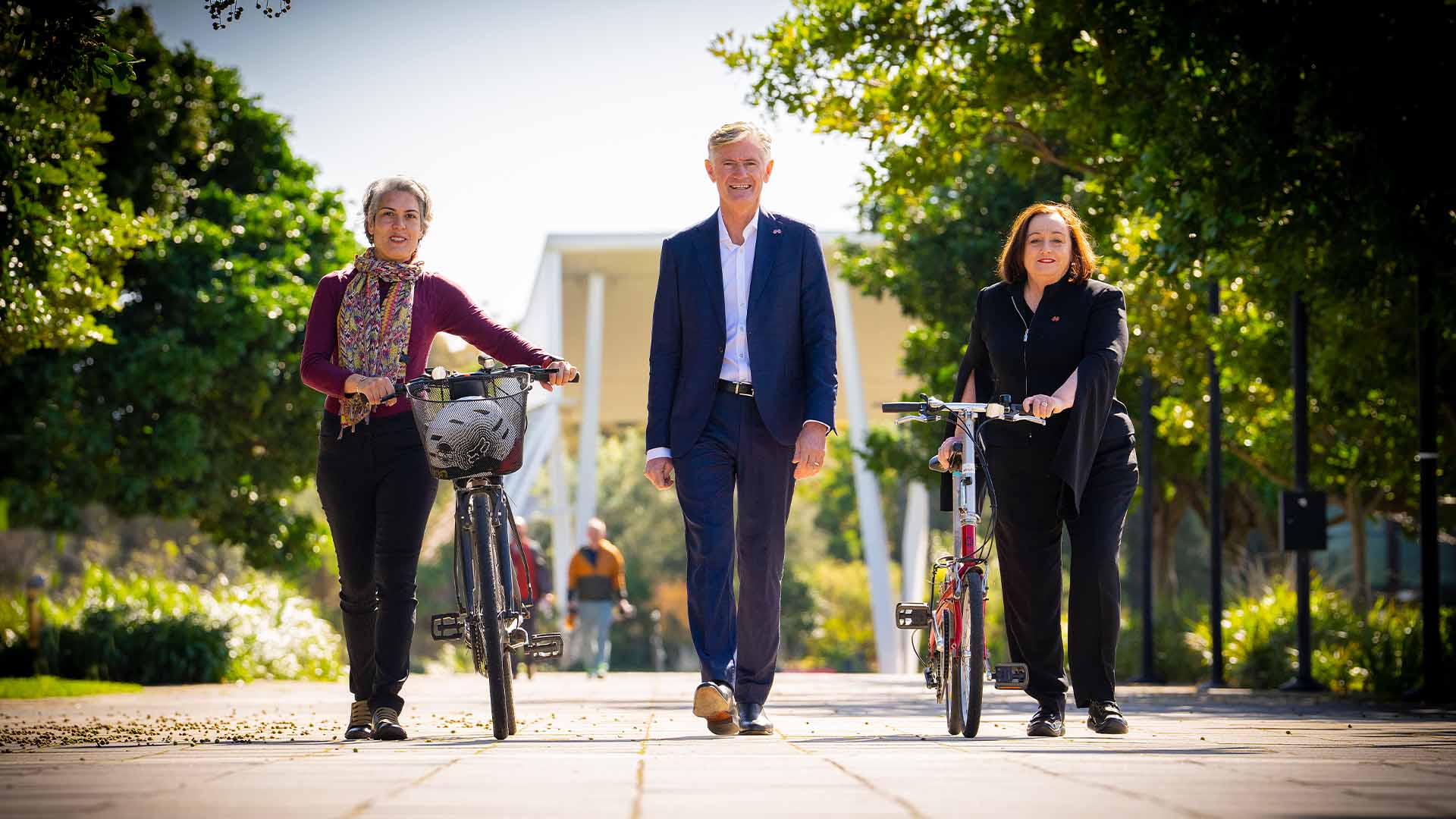
Samara Sheppard, Destination Wollongong’s UCI Bike Coordinator, says that as UOW is exceptionally placed to allow employees and students to cycle commute, she’s hoping the institution will become the champion of the Bike Friendly Employer program.
“UOW has excellent end-of-trip facilities and a budding cycling culture, as well as support and promotion from their UOW Cycling Club that offers students refurbished bikes. During the Ride2UOW event, everyone saw how easy and safe it is to ride to the University using the connecting cycle path network,” Samara says.
Eline thinks that one of the joint legacies of both the pandemic and the 2022 UCI Road World Championshipsis that people in the Illawarra have gotten curious about cycling and less scared to use it to move around. More local advocacy groups, like The Illawarra Bicycle Users Group Inc, where Eline is a member, promote cycling as a viable and inclusive mode of transport and recreation fit for everyone.
“I see that more and more people cycle to drop their kids off at school or pick them up, which is wonderful. These habits are formed slowly but once you’re on your bike every day, you just see how happy it makes you feel,” Eline says.
Aidan Sims is also hopeful that in the future, there will be fewer cars and more bikes on the road in Australia.
“As a researcher, I’ve travelled to a few places like Copenhagen in Denmark and Muenster in Germany, where cycling as the most common mode of transport has become normalised. It’s just brilliant. The population is just as dense, or denser than here, but it feels way less hectic, busy and crowded getting about the place because most people only occupy a bike’s worth of space rather than a car’s worth.”
Aidan also thinks that even though Wollongong can feel like a pretty intimidating place to ride due to its geography, regular cyclists always know the best back-ways and shortcuts to move around.
“So if anyone is interested in switching to riding but worries about good ways to get to the campus – just ask a fellow cyclist. It’s a community sport after all.”